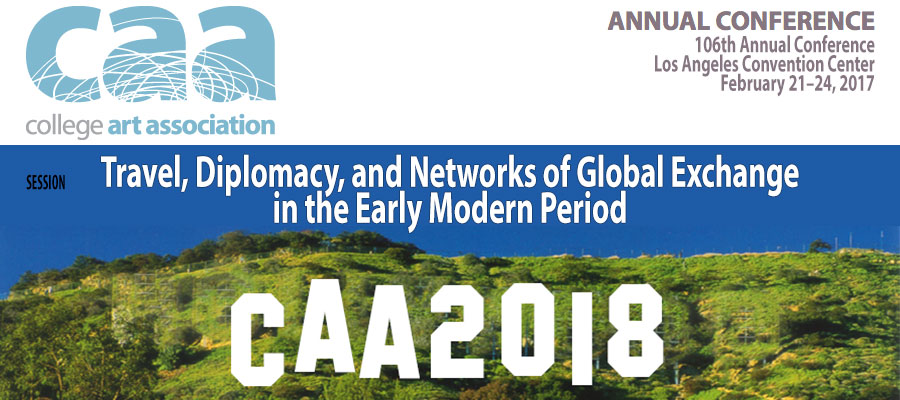Travel, Diplomacy, and Networks of Global Exchange in the Early Modern Period, 106th College Art Association Annual Conference, Los Angeles Convention Center, February 21–24, 2017
Early modern artists were known to travel alongside ambassadors on diplomatic missions, in accompaniment of explorers, or as entrepreneurial merchants on solo expeditions. Works of art likewise toured en route with artists, were produced amid voyages, or at times illustrated the arrival of foreigners in new lands.
This panel seeks to explore the role visual culture played vis-à-vis travel, trade, diplomacy, and transcultural encounters in the early modern period. In what ways did the movement of artists contribute to the construction of aesthetic hybridism and early cosmopolitanism? If art forms such as Japanese Namban screens and Ottoman costume albums divulge a cultural encounter, do they presuppose a burgeoning “global public”? Taking into account that global art history is not, to use the words of Thomas DaCosta Kaufmann, “the reverse side of Western art history,” but instead contrary to national art and its incumbent limitations, this panel seeks contributions from scholars interested in a horizontal approach to artistic exchange where emphasis is placed on the interconnectedness of visual cultures, styles, and techniques.
Contributors to this panel may deal with any aspect of global travel and exchange in the early modern period (1450–1800). Papers might address the visual manifestations of political diplomacy, art as foreign reportage, the adaption of foreign artistic techniques, or the role of the court as a contact zone for cross-cultural exchange. Topics may include a discussion of an individual work of art or artist, or can consist of more theoretical discussions of travel in the early modern world.
Session Chair
Justina Spencer, Carleton University
